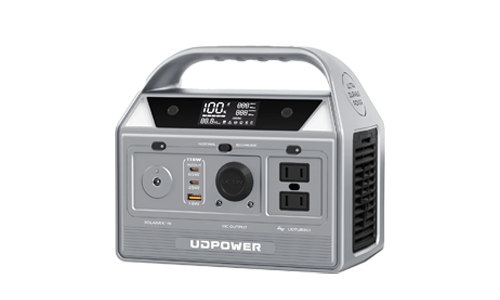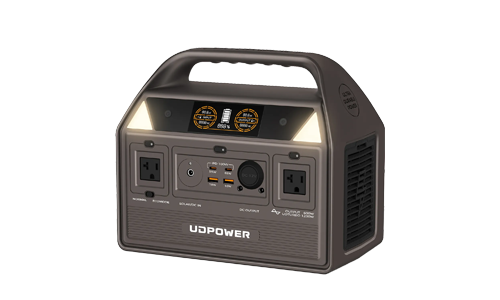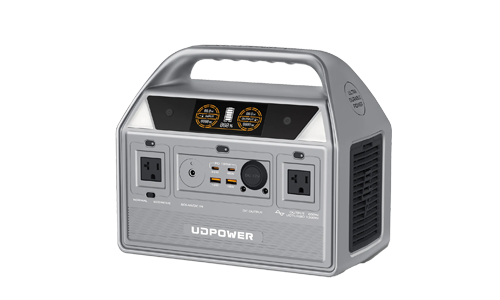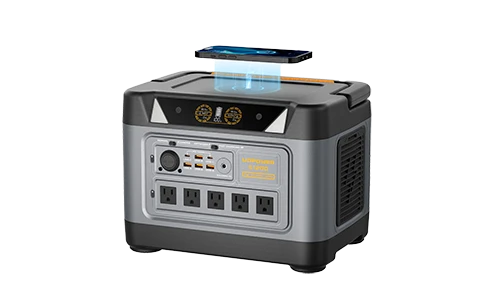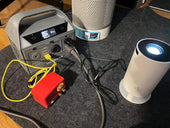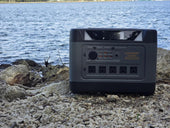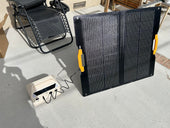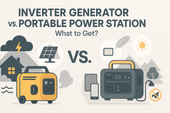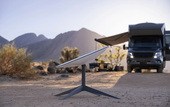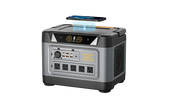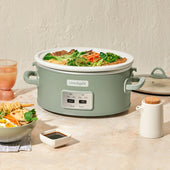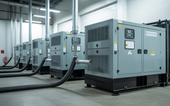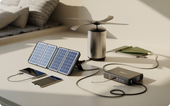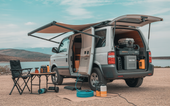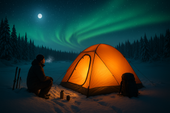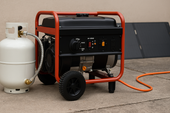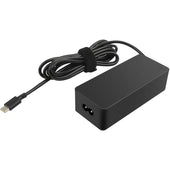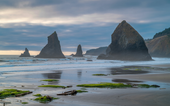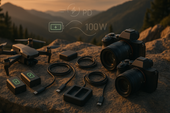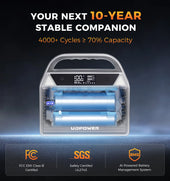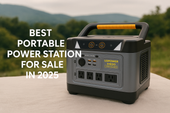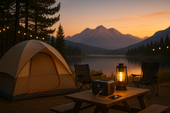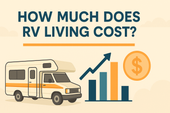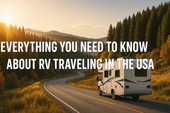RV Living in California: Best Places, Cost, & Checklist
ZacharyWilliamThinking about RV living in California—whether full-time, seasonally, or a few months at a time? This guide walks through the best regions to park your rig, a realistic look at California RV living costs, and a practical checklist so you can hit the road with confidence.
Note: Regulations and campground prices change often. Always confirm current rules, availability, and rates before you roll in.

1. Is RV Living in California Right for You?
California is RV heaven and headache in one package. You get oceanfront campsites, redwood forests, deserts, and snowy peaks, often within a day’s drive of each other. At the same time, you’re dealing with:
- Higher campsite and fuel prices than many other states
- City-by-city rules on where you can park or sleep in your rig
- Wildfire seasons, heat waves, and occasional winter storms in the mountains
If you like variety, can handle some planning, and are comfortable budgeting for a higher cost of living, RV living in California can absolutely work—especially if you build a mix of monthly RV parks, boondocking, and shorter stays in premium coastal spots.

2. Best Places in California for RV Living
Instead of chasing a single “best” campground, think in terms of regions. Each area has its own vibe, weather, and price point.
Quick tip
For long-term RV living, try to combine one or two monthly parks (for mail, routine, and lower costs) with shorter trips to state beaches, national parks, and boondocking spots for adventure.
2.1 Southern California Coast: Mild Winters, Premium Prices
From San Diego up through Orange County and Los Angeles, the SoCal coast is one of the most sought-after RV areas in the country. Expect:
- Beachfront or near-beach RV parks with full hookups and strong Wi-Fi
- Easy access to groceries, hospitals, and city jobs
- Higher nightly rates—especially at oceanfront parks near LA and San Diego
For example, popular coastal RV parks near Los Angeles, such as county-run beachfront facilities, often list nightly rates in the mid-$60s to mid-$70s for standard sites, plus taxes and fees during regular seasons.
2.2 Central Coast: Pismo, Morro Bay, & Big Sur Gateway
The Central Coast feels slower and more relaxed than Southern California but still gives you ocean views and mild weather. Towns like Pismo Beach, Morro Bay, and Santa Cruz area offer:
- State beaches with partial hookups (or dry camping) close to the water
- Private parks with full hookups, laundry, and long-term options
- Cooler coastal fog and fewer extreme heat days than inland California
Spots around Pismo and Oceano often run at mid-range nightly prices compared with SoCal, but still expect a premium near the sand in peak summer and holidays.
2.3 Northern Coast & Redwoods
If you want ferns, fog, and giant trees more than palm-tree beaches, the far north coast (Eureka, Crescent City, Redwood National and State Parks) is a fantastic RV base. Nearby RV parks commonly advertise:
- Full-hookup sites close to redwood groves and coastal trails
- Average nightly rates often in the $50–$100 range, depending on season and amenities
- Cool, damp winters and mild summers—great if you dislike extreme heat
2.4 Sierra Nevada & Lake Tahoe
Want mountain air, alpine lakes, and winter snow? The Sierra Nevada (including the Lake Tahoe area) offers:
- Forest campgrounds and resort-style RV parks near lakes and ski areas
- Peak-season nightly rates that often land around $70–$120 near popular destinations like Tahoe
- Cold winters, possible snow-chain requirements, and seasonal closures
Many RVers treat these locations as summer bases and move to lower elevations or the desert for winter.
2.5 Desert & Inland Hot Springs
Southern California deserts—around Anza-Borrego, Joshua Tree, and the Salton Sea—can be surprisingly friendly to long-term RVers:
- Plenty of sunshine for solar power and portable power stations
- Dry-camping options plus resorts with hot springs and pools
- Lower nightly or monthly rates than coastal cities in many cases
As an example, some desert RV resorts list with monthly rates around $1,050–$1,200 plus utilities for standard sites, while dry-camp areas can be less.
2.6 Inland & Suburban Long-Term RV Parks
For true full-time RV living in California, most people eventually rely on at least one monthly RV park. Away from the coast, you can find:
- Parks near Los Angeles exurbs, the Inland Empire, and Central Valley cities
- Monthly rates that may start around $700–$900 per month plus metered electricity at simpler parks
- Higher-amenity or coastal-adjacent resorts with monthly rates from about $1,700 to $2,300+ plus electric
These parks are popular with traveling nurses, construction workers, and remote workers who want a “home base” while still being mobile.

3. How Much Does RV Living in California Cost?
Every rig and travel style is different, but if you’re searching for “RV living in California cost”, here’s a realistic framework. All numbers below assume two adults and a self-contained RV.
3.1 Typical Nightly and Monthly Campsite Costs
Based on published rate sheets for California RV parks and nationwide averages for larger campground brands, you’ll commonly see:
- Standard private RV parks: Roughly $50–$90 per night in many parts of the state
- High-demand coastal or resort parks: Often $70–$130+ per night in peak season
- Public campgrounds (state/national parks): Frequently a bit lower per night, but usually without monthly options
- Monthly inland parks: About $700–$1,200 per month plus metered electricity in many cases
- Monthly coastal or luxury resorts: Often $1,700–$2,300+ per month plus utilities
These are ballparks, not guarantees—holiday weeks, special events, and location can swing prices up or down.
3.2 Example Monthly Cost Ranges
Here’s how total monthly costs might shake out once you include more than just your site fee:
| Cost Category | Budget/Boondocking Focus | Mixed Parks & Travel | Resort/Coastal Focus |
|---|---|---|---|
| Campsite / Parking | $0–$700 Free boondocking + occasional cheap parks |
$900–$1,600 Blend of monthly sites and weekly moves |
$1,700–$3,000+ Premium coastal or resort parks |
| Fuel & Tolls | $150–$300 | $250–$500 | $250–$600 |
| Electric / Propane | $50–$120 Less if you rely on solar |
$80–$150 | $100–$200 |
| Food & Household | $400–$700 | $600–$900 | $700–$1,100 |
| Phone & Internet | $80–$150 | $100–$200 | $100–$250 |
| Insurance, Maintenance, Misc. | $150–$300 | $200–$400 | $250–$500 |
For many people, that means a realistic total of roughly $1,000–$2,000 per month on the frugal end (heavier on boondocking and inland parks) up to $3,000–$4,000+ per month if you favor California’s most desirable coastal or resort destinations.
4. Rules, Permits & Safety Considerations
4.1 California State Parks & Public Campgrounds
California State Parks use the ReserveCalifornia system with a rolling six-month reservation window for most campgrounds. You can usually book from today out six months, subject to each park’s maximum stay rules.
For many state parks, there is a 30-night maximum stay per park per calendar year, so they are best treated as part of your rotation rather than a permanent home.
4.2 Overnight Parking & “Stealth” RV Living
California does not have a single statewide rule on sleeping in vehicles. Instead, each city or county sets its own ordinances. Some key realities:
- Many coastal cities restrict or ban overnight street camping in RVs
- Some areas allow limited overnight parking in industrial zones or designated safe-parking lots
- Stores that once allowed RVs overnight (like certain big-box retailers) now often follow stricter local rules
4.3 Boondocking on BLM & National Forest Land
Much of California’s Bureau of Land Management (BLM) and national forest land allows some form of dispersed camping, but rules vary widely:
- Typical stay limits range from 7 to 14 days per site or district
- Fire restrictions are common in summer and during high fire danger
- Some areas require a free permit for campfires or stove use
Always check the specific ranger district or BLM field office website for current closures, fire bans, and stay limits before you set up a long-term boondocking spot.
4.4 Weather, Wildfires, and Air Quality
California’s climate is a perk and a risk:
- Summer heat in inland valleys and deserts can easily exceed 100°F
- Wildfire smoke can reduce visibility and air quality, especially late summer and fall
- Winter storms in the Sierra Nevada can bring snow, ice, and chain controls
Build flexibility into your travel plans so you can move when weather or smoke make a region uncomfortable or unsafe.

5. California RV Living Checklist
Use this RV living checklist as a starting point and adapt it to your rig, family size, and travel style.
1 Paperwork & Money
- Valid driver’s license appropriate for your RV size
- Current registration, inspection, and any emissions requirements
- RV insurance (consider full-timer coverage if you sold your house)
- Emergency fund for repairs, medical needs, and sudden moves
- At least one backup payment method (second card, savings account)
2 Power & Energy
- 30-amp or 50-amp shore-power cord and adapters (“dog bones”)
- Surge protector or EMS unit to protect your RV’s electrical system
- House batteries in good condition and properly fused
- Generator or quiet alternative (such as a portable power station)
- Extension cords and a way to safely run small loads outdoors
3 Water, Waste & Kitchen
- Freshwater hose rated for drinking water
- Water pressure regulator and basic inline filter
- Sewer hose, clear elbow, and disposable gloves
- Optional portable waste tank for long sewer walks
- Compact cookware and food containers that won’t rattle while driving
4 Climate & Comfort
- Reflective window covers and vent insulators for summer heat
- Portable fan or small space heater (appropriate for your power system)
- Extra blankets or sleeping bags for mountain nights
- Leveling blocks and wheel chocks for uneven campsites
- Outdoor mat, camp chairs, and shade options (awning or pop-up shelter)
5 Safety & Emergency Gear
- Up-to-date smoke, CO, and propane detectors
- At least one ABC fire extinguisher that everyone knows how to use
- First-aid kit and any prescription medications
- Roadside kit (reflective triangles, basic tools, tire gauge, jack)
- Printed list of emergency contacts and local non-emergency numbers
6 Connectivity & Work
- Cell plan with hotspot or dedicated mobile Internet device
- Signal booster or directional antenna if you work remotely
- Cable organization and power strips where you actually sit and work
- Offline maps downloaded for areas with poor coverage
6. Power Solutions for California RV Life (Including UDPOWER Stations)
California’s mix of hookups, dry camping, and boondocking means your power setup needs to be flexible. Many RVers combine:
- Shore power in RV parks and resorts
- Roof-mounted or portable solar panels
- A portable power station for quiet, no-fumes power where generators are restricted
As an example, UDPOWER makes LiFePO₄ portable power stations and solar generators that pair well with California RV living. Compared with traditional gas generators, they are quiet, emission-free at the point of use, and easier to run in strict campgrounds.
6.1 Example UDPOWER Models for RV Living
Specs below are summarized from UDPOWER’s official product and comparison pages. Always check the live product page for the latest details and pricing.
| Model | Picture | Key Specs (Approx.) | Best Use in a California RV | Learn More |
|---|---|---|---|---|
| C400 Portable Power Station |  |
LiFePO₄ battery around 256Wh; pure-sine inverter about 400W continuous (family page notes up to ~800W surge); roughly 6.9 lb; designed for 4,000+ battery cycles with fast charging and solar input support. | Great for short trips, running a laptop and camera gear, or powering a few small appliances (fans, lights, router) without starting your RV generator. | UDPOWER C400 product page |
| C600 Portable Power Station |  |
LiFePO₄ battery about 596Wh; inverter rated around 600W with up to roughly 1,200W max output for surge loads; around 12.3 lb; supports AC, car, and solar charging (up to roughly 240W solar) with 4,000+ cycle life. | Ideal as a weekend RV hub—think 12V fridge cycling, projector movie nights, or work-from-RV setups. It can also back up sensitive devices during campground power hiccups. | UDPOWER C600 product page |
| S1200 Portable Power Station |  |
LiFePO₄ battery around 1,190Wh; inverter rated close to 1,200W with up to about 1,800W surge; ~26 lb; AC charging up to roughly 800W, solar input up to about 400W, and a transfer-time UPS mode under 10 ms. Offers multiple AC outlets, dual 100W USB-C ports, USB-A, DC ports, a 12V car outlet, and wireless charging. | Works as a quiet “room hub” or RV backup power bank for CPAP machines, routers, monitors, or a coffee maker in the morning—especially handy in parks with strict generator hours or spotty power. | UDPOWER S1200 product page |
Pairing a unit like the S1200 with portable solar panels can reduce your reliance on metered electricity in monthly parks or give you comfortable boondocking days on BLM or forest land—without violating quiet-hours rules.
7. Sample Monthly Budget Scenarios
To make the numbers more concrete, here are three simplified scenarios for RV living in California. These are examples, not guarantees—your exact costs will depend on your rig, driving habits, and lifestyle.
Scenario A: Budget Inland + Boondocking
- 2 weeks/month at an inland park on a monthly rate: ≈ $750
- 2 weeks of free or low-cost boondocking: ≈ $0–$150 in small fees
- Fuel: ≈ $250
- Power/propane: ≈ $80 (plus a portable power station + solar)
- Food & household: ≈ $600
- Phone/Internet: ≈ $120
- Insurance/maintenance/misc.: ≈ $200
Rough total: about $2,000/month if you watch driving and eat mostly at home.
Scenario B: Coastal Park Hopper
- 3 weeks/month in coastal RV parks at $70–$110/night: ≈ $1,700–$2,300
- 1 week/month inland or dry camping: ≈ $0–$350
- Fuel: ≈ $300–$450
- Power/propane: ≈ $120–$200
- Food & household: ≈ $700–$1,000
- Phone/Internet: ≈ $150–$220
- Insurance/maintenance/misc.: ≈ $250–$400
Rough total: around $3,200–$4,500/month depending on how often you move and eat out.
Scenario C: Stationary Monthly Park + Weekend Trips
- Full month at a long-term inland park: ≈ $900–$1,400 (plus electric)
- 1–2 weekend escapes to the coast using memberships or shoulder-season deals
- Fuel: ≈ $200–$300
- Power/propane: ≈ $100–$160
- Food & household: ≈ $650–$900
- Phone/Internet: ≈ $120–$200
- Insurance/maintenance/misc.: ≈ $200–$350
Rough total: about $2,300–$3,300/month, with a good balance of stability and travel.
8. California RV Living FAQ
Can you legally live full-time in an RV in California?
In most cases, yes—if you are parked where long-term RV occupancy is allowed. Many California cities forbid living in an RV on public streets, but private RV parks, certain mobile-home communities, and some private rural properties allow long-term stays. Always confirm zoning rules and park policies before you commit.
Where can I park an RV overnight for free in California?
Your best options are usually BLM land, national forests, and a few county or city-managed overflow areas that explicitly allow overnight parking. Some businesses may still permit overnight stays with manager approval, but many follow strict “no overnight parking” rules now. When in doubt, ask and get permission in writing (or an email) if possible.
Is RV living in California cheaper than renting an apartment?
It depends where and how you live. A frugal inland RV setup with occasional boondocking can be cheaper than a big-city apartment. But staying month after month in premium coastal RV resorts can easily rival—or even exceed—urban rent. The main advantages of RV living are mobility and flexibility, not guaranteed low cost.
Do I need special insurance if I live in my RV full-time?
If your RV is your primary residence, ask your insurer about full-timer RV policies. These typically blend standard RV coverage with some features of homeowners or renters insurance (such as liability and personal property protection). Requirements and options vary by company, so it’s worth getting a few quotes.
Are generators allowed in California campgrounds?
Most campgrounds allow generators but limit run hours and noise levels. Some public beach and forest campgrounds only allow generators at specific times of day, and a few prohibit them entirely. This is one reason many RVers in California use portable power stations and solar panels as a quiet, campground-friendly power option.
How can I keep cool or warm in my RV without blowing my budget?
In summer, focus on shade, ventilation, and smart locations—higher elevations or coasts instead of low-desert heat. Reflective window covers and fans go a long way. In winter, consider a good sleeping system, safe supplemental heat (propane or electric, sized for your rig), and flexible travel so you can avoid big storms. A right-sized portable power station can help run fans, heated blankets, or small heaters when shore power isn’t available.


